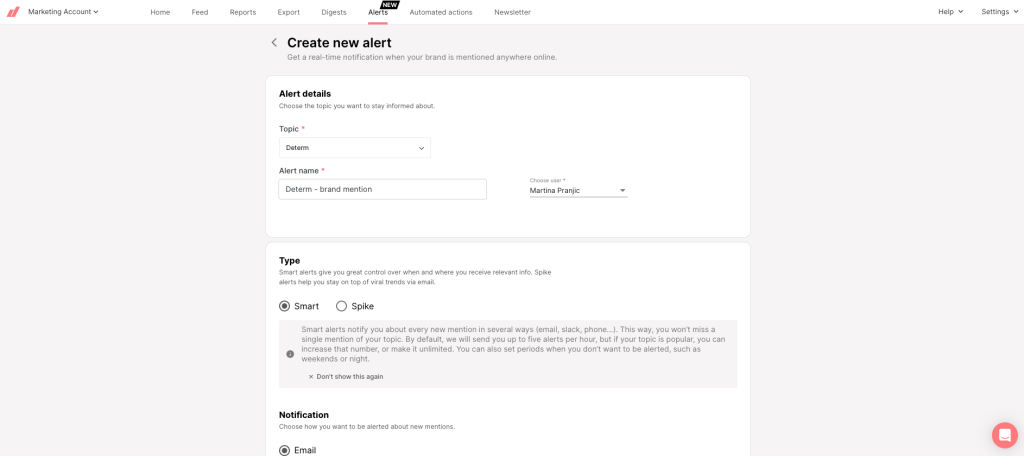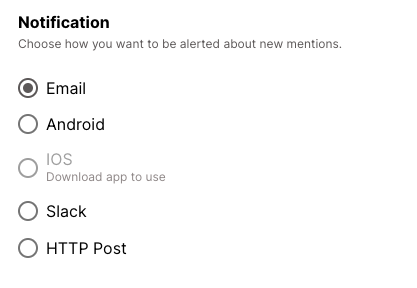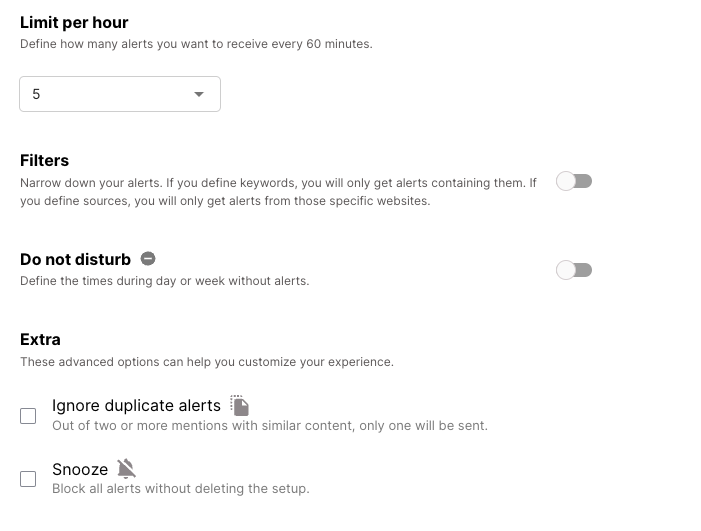If working in PR, handling media crises is in your job description. Knowing you’re the one who handles them, unfortunately, doesn’t make the job any less stressful.
Especially if a crisis is in the making and you’re not aware of it.
Picture this scenario. You arrive at your workplace, relatively unoccupied and ready to start the day. You briefly chat with your colleagues (exchange the latest office gossip), brew your coffee and then settle in for the day.
Without you knowing, however, while your coffee was brewing, so was a media crisis surrounding your brand. Your latest campaign has offended quite a few individuals who were rather happy to share their unhappiness with others. That is, they were compelled to share it on social media. The discontent has been slowly gaining traction and now a few media outlets have picked up the story, too. And look, you finally have a trending hashtag – never mind its negative connotations.
Then, still blissfully ignorant, you receive an urgent call or an e-mail. Honestly, how are you only finding about this now, Susan? Thrust now in your face, that one article accusing the brand of inappropriate behavior, stares accusingly. Your biggest fear has become a reality. The last person to know about this problem is – you.
Poor Susan, ever at fault, now starts digging into the issue and tries to come up with a solution and crisis management strategy. She huffs and she puffs, but she is ready to try and appease the masses with a heartfelt apology. Does it work?
The apology might. The explanation of why Susan was the last to find out about the issue will not.
What then, could have helped Susan win this round?
Simply put – alerts.

Alerts in Media Monitoring
You’ve probably come across media monitoring once or twice in your line of work. Maybe you even implement one of today’s plentiful media monitoring tools on a daily basis.
That means you diligently monitor your brand as well as anything of interest to your brand. You accumulate data on a daily basis and sift through all the mentions and reports. Either alone, or with the help of your team.
It’s rather time-consuming though, isn’t it?
Imagine how much easier Susan’s life could have been if only she took advantage of the alerts feature.
There’s plenty of options to choose from, too.
Our algorithm actually calculates the average amount of mentions a brand is getting. If Susan were then to monitor a certain topic for a while, its pattern could have been well established – an average activity of its online presence noted. Thus, when Susan’s topic started generating more mentions than usual, she’d automatically be notified by an e-mail.
If this were a case, Susan wouldn’t have found herself in a situation where she’s one of the last few people to know about the crisis. Actually, she would have been the first. Not only that, but she’d already had a plan set in motion by the time someone slapped an article about the crisis on her desk.
A positive mention of your brand gets gazillion retweets? Be the first one to find out about it and enjoy spreading the popular user-generated content.
Read 6 Tips to Write Trending TikTok Hashtags for Your Brand in 2024
How do alerts function
Let me also quickly refer to a study case we’ve done on Dolce & Gabbana. They have recently got themselves into a rather hairy situation and were faced with the exact same problem that’s been discussed thus far – a media crisis. Their campaign went viral because of racism accusations towards China. Subsequently, their show was cancelled, reputation damaged and millions of dollars lost. All due to not reacting on time and underestimating the power of social media.
That’s why alerts are a great feature to fully take advantage of. When Susan’s or Dolce & Gabbana’s campaign started to receive so much negative feedback, they would have already had all the necessary information at their disposal. Media monitoring tools crawl the whole of world wide web for you, not just a chosen few websites or social media platforms (even if such an option exists). They track and gather all the data relevant to your brand and base all the reports on them. Alerts simply notify you of that data in a clear and concise way, and they are so easy to set up, too. You can only be a few clicks away from continually keeping up with your brand.
However, a media crisis is one of the more extreme examples of why alerts are so important to businesses nowadays. Always being one step ahead is an absolute must considering the possibilities of today’s technology and tools.
However important this particular use of alerts is, there are other types of alerts. Not only alerts but also digests.
Let’s dive a bit deeper into this feature.
How to Set up Alerts
Determ, specifically, offers alerts and digests. Even more specifically, it offers real-time and custom e-mail alerts, as well as daily and weekly e-mail digests.
All you have to do to start it up is click on the folder for which you want to set up the alerts and then click on the Alerts on the top of the screen.

Fill up Alert details – choose a folder and/or topic which you want to receive alerts for, and name the Alert that you are about to create.
To continue, decide which type of Alerts would deliver the right type of notifications for you by choosing between setting up Smart or Spike Alerts – or both.
Smart vs spike alerts
Have you decided to set up Smart Alerts, the first step is choosing the Smart Alerts between the two type of Alerts that Determ offers:

The difference between the two hides in the type of notifications you wish to receive.If you want to receive notifications for every Mention or Mentions that match specific filter criteria, set up Smart Alerts.
If your aim is to receive notifications when there is an increase in the amount of mentions for a certain Topic of Folder, set up Spike Alerts.
Spike Alert email
In order for you to keep track of important changes that might influence your business, you can take deeper dive into the spike alerts through the Spike Alert email. It not only notifies you of trending topics but also highlights posts that may have triggered the increase in mentions. This feature provides immediate context, empowering you to take action or refine your strategies. In addition, the Spike Alert dashboard comprises a range of informative graphs and a concise Synthia summary for an in-depth analysis of the situation.
Real-time alerts really keep you up to date since they notify you about new mentions as they appear online. They are great for keeping an eye out for any potential media upheaval that’s happening in real time. With these alerts you’ll be the first to know if someone mentions your brand alongside keywords like “boycott”, “scandal”, “salmonella” or in any other negative context related to your business. They’ll also help you discover positive content. Whether your newest campaign truly hit it off with the audience or there’s a generally positive sentiment – you’ll know about it.
Net Sentiment Spike Alert
There is one more type of a Spike Alert in Determ called Net Sentiment Spike Alert. The basis of this type of alert is that it is triggered when the sentiment around a specific topic related to a brand (or keyword) you’re tracking significantly shifts.
This enables you to identify potential crises before they escalate or to capitalize on an emerging trend. If, for example, your new marketing campaign starts getting a lot of negative comments, this alert will get triggered and give you time to think about an alternative.
How Will Your Alert Be Delivered
Next, choose how you want to be alerted about new mentions – select a setting based on whether you want to receive alerts on your email, Slack*, as an HTTP post at a specific site (you will need to add a URL link to the page) or through your mobile app (iOS/Android):

Then, define how many alerts you want to receive every 60 minutes:

Limit per hour limits the number of alerts that you receive per hour. For example, if you look at the picture above, the option is set to 5 max alerts per hour.
It is possible to limit the number of alerts to 5, 10, 25, 50, 75, and 100 per hour, or choose the option Unlimited with which you’ll receive the real number of alerts per hour, no matter the number.
You can also define the times during day or week without alerts by enabling the Do not disturb option, or choose some of the advanced options:
- Ignore duplicate alerts – this option will have the tool send only one notification for two or more mentions with similar content.
- Snooze – this option will block new alerts (notifications) without deleting the Alerts setup.
Lastly, you can decide to narrow down your alerts: if you define keywords, you will only get alerts containing the chosen keywords. If you define sources, you will only get alerts from those specific websites.

To make sure this isn’t a desktop only thing, you can also turn on push alerts on your phone as well as set up Slack alerts. You can even set up Slack alerts for more folders and receive new mentions in the same Slack channels.
Now, imagine if this feature were a part of Susan’s daily work routine – brew coffee, chat with colleagues, settle in, check daily 8 AM scheduled alerts.
Do you think she still would have been blindsided?
Takeaway
Even though they are excellent in it, don’t let the discovery of a crisis be the only reason you use alerts. Alerts are, above all else, a great way of continually keeping up with anything that is relevant to your business. Take the above-mentioned digests, for instance. Every day, if you so choose, you get a summary of your brand’s online mentions – where you were talked about, who talked about you and what were they talking about.
The very idea of being in the know about every aspect of your brand’s online presence, every minute of every day truly is tempting, isn’t it?
Choose to always stay one step ahead and start using alerts now – book a demo and check out how.